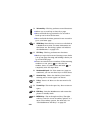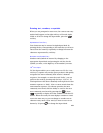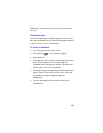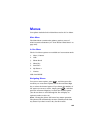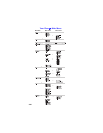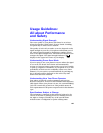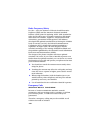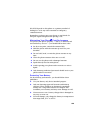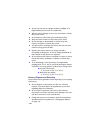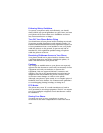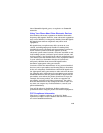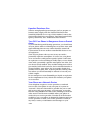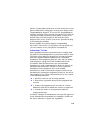4CFKQ(TGSWGPE[5CHGV[
In 1991—1992, the Institute of Electrical and Electronics
Engineers (IEEE) and the American National Standards
Institute (ANSI) joined in updating ANSI’s 1982 standard for
safety levels with respect to human exposure to RF signals.
More than 120 scientists, engineers, and physicians from
universities, government health agencies, and industry
developed this updated standard after reviewing the available
body of research. In 1993, the Federal Communications
Commission (FCC) adopted this updated standard in a
regulation. In August 1996, the FCC adopted a hybrid
standard consisting of the existing ANSI/IEEE standard and
the guidelines published by the National Council of Radiation
Protection and Measurements (NCRP).
The design of the phone complies with these updated
standards. Of course, if you want to limit RF exposure even
further than the updated standard, you can choose to control
the duration of your calls and operate your phone in the most
power-efficient manner.
♦ You should not touch the antenna unnecessarily when
using the phone.
♦ Touching the antenna may affect the call quality and may
cause the unit to operate at higher power than it would
need otherwise.
♦ When using the handset, hold the handset just as you
would hold any other telephone, and keep the antenna
pointed up and over your shoulder.
♦ Use of hands-free devices will further limit RF exposure.
'OGTIGPE[%CNNU
+/2146#06016+%'2.'#5'4'#&
Because of various transmission methods, network
parameters, and user settings used to complete a call from
your wireless phone, a connection cannot always be
guaranteed.
Therefore, emergency calling may not be available on all
wireless networks at all times.



